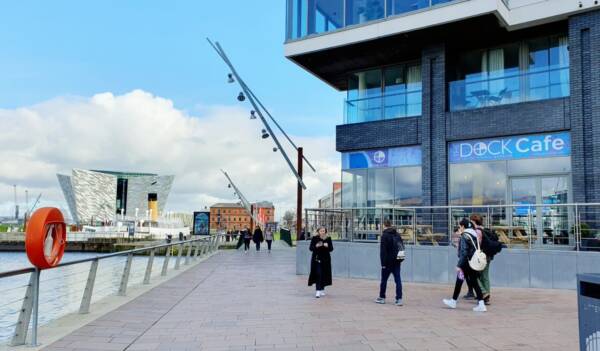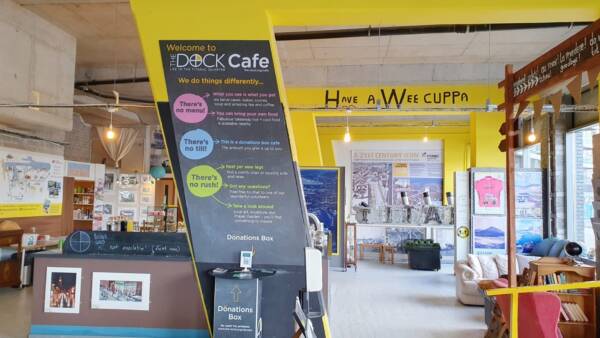A sideways look at economics
Vienna’s famous Der Wiener Deewan restaurant was opened in 2005 by Afzaal Deewan, an asylum-seeker from Pakistan. When he first arrived in Vienna he missed the taste of food from home, and would visit Asian restaurants around the city, but he found them very expensive. It wasn’t until he met Natalie — then a student, now his wife — that the two of them came up with an idea: to open a restaurant that would be accessible to all, asylum-seekers and students included. And so Der Wiener Deewan was born — an all-you-can-eat, pay-what-you-wish (PWYW) Pakistani restaurant located in the city’s ninth district.
I recently spent a long weekend in Vienna visiting a friend from university, and looked up the top things to see in the city. Der Wiener Deewan was high on the list. The idea of letting customers decide how much to pay for goods or services got me wondering how this interesting pricing model can be financially sustainable.
All these years later, the restaurant is still going strong. Inside, customers can help themselves to as much or as little food as they want from the buffet. When it’s time to leave, they approach the till like they would in any other venue. But rather than asking for the bill, they instead tell the staff how much they would like to pay. While alcohol and packaged soft drinks have a fixed price, the food doesn’t. The philosophy is simple, Natalie once explained: “They should choose based on how much they ate, how much they liked the food and how much money they have.”
So, how does the business turn a profit using this pricing model? After all, traditional economic theory argues that it would be illogical for ‘Homo economicus’[1] — the rational self-interested man whose sole purpose is to maximise his own utility — to pay anything other than zero in this scenario.
But it turns out that the majority of people do pay fairly, if not actually extra. Observing more than 80,000 individual payments at the restaurant over two years, economists Gerhard Riener and Christian Traxler found that only 0.5% of all payments were zero.[2]
So why is it that so few customers take the opportunity to benefit from a free lunch? In reality, many of us do not act purely based on our own self-interest but are instead motivated by social values of fairness and reciprocity. Businesses adopting the PWYW model rely on these values in order to stay open. There is also a benefit to the customer in contributing a fair amount. According to Natalie again: “If they want to have this place tomorrow and the day after tomorrow then they have to contribute to it.”
There are many other examples of the PWYW model being used in practice. Close to where I grew up, The Dock Café, a faith-based community coffee shop located in the heart of Belfast’s Titanic Quarter, recently celebrated its tenth anniversary. Unlike Der Wiener Deewan it is a not-for-profit café, relying on volunteer staff. It also benefits from free rent after the Titanic Quarter developers offered them a ‘Meanwhile Lease’ on an empty shop unit. Still, the café manages to cover its costs thanks to generous donations from its customers. “Some people are clearly paying above the odds,” says café founder Reverend Chris Bennett. “Some people pay below the odds too, but the great thing is we never know who pays extra or less. I think there’s a real dignity in that.”


The Dock Café, Belfast
While all of this sounds like a great social initiative, sadly it isn’t always financially feasible. Such was the case for honesty-box restaurant ‘Pay As You Please’ in Killarney, Ireland, which shut its doors in January 2014 after opening in March 2011. Its chef, Barry McBride, highlighted the flaws in the model: “Though the vast majority of people are honest, the obvious negative was that sometimes people simply didn’t pay for their food. Our honesty box sometimes yielded IOUs and scratch cards.”
The good news is that research suggests there are ways of increasing the likelihood of success for businesses using PWYW models. Firstly, people are likely to give more when they must hand over their contribution face-to-face, as opposed to leaving an anonymous donation. This was actually my own personal experience when I attended London’s Top Secret Comedy Club before Christmas. Audience members can book tickets for its Sunday evening shows for just £1 via the website. At the end of the show, the MC explained to the audience that the club relies on donations to stay afloat and asked us to give what we thought the show was worth. We were given a ‘guide’ price of £10 as the minimum they thought we should pay. We had to hand our donation directly to the MC when exiting the venue, creating the added pressure of not wanting to come across as a cheapskate. There were also incentives on offer: for example, pay the guide price of £10 and you get a membership card which gets you various discounts on shows for the next year. Taken altogether, the guide price, financial incentives and handing over the money face-to-face are all likely to contribute to higher payments.
One study[3] argues that payments in PWYW settings are jointly influenced by individuals’ social value orientation (SVO), i.e., whether they are pro-self or pro-social, and by the degree to which exchange or communal norms are present when the customer decides how much to pay.
In the study’s first experiment, participants were asked how much they would pay for a cookie from a local café. Simultaneously, a questionnaire was used to determine participants’ SVO. Unsurprisingly, on average, participants that were pro-social paid more than those that were pro-self ($1.22 vs $0.62 respectively).
In a further experiment, participants were presented with two scenarios where a local coffee shop was offering a cup of coffee using PWYW pricing. In scenario one, researchers presented a formal ‘exchange norm’ by emphasising the quality of the coffee and the efficient service. In scenario two, researchers instead presented a ‘communal norm’ by emphasising the personal aspects of the exchange, saying that the barista offered a warm greeting and gave individual coffee recommendations based on participants’ preferences.
Pro-social participants increased the amount they would pay for the coffee by 13% from $2.45, on average, in scenario one to $2.79 in scenario two. Interestingly, pro-self participants increased the amount they would pay the most, up by almost a third from $1.98, on average, in scenario one to $2.63 in scenario two. Simply shifting the emphasis from a formal transaction between buyer and seller, to a positive human connection between the customer and the barista, made the pro-self participants temporarily more generous.
While there is certainly a lot more at risk for businesses needing to pay rent and cover wage costs using the PWYW model, compared to charities and not-for-profits, the key takeaway is that there are ways to reduce the risk of receiving low or zero payments, whether through setting a guide price and making customers hand over the money face-to-face, or simply by nudging people into a more communal relationship, thereby incentivising customers to pay more. And of course, the other positive to take away from this for all the cynics out there is that people are more honest than you think, particularly when that is what’s expected of them by society, and will pay a fair price (if not more) in most cases. I guess this shouldn’t come as a surprise. After all, honesty really is the best policy!
[1] Homo economicus is a theoretical abstract of the rational economic man whose sole purpose is to maximise his own utility. It should be noted, however, that no economist ever believed this was a good representation of how people actually behave. We all have idiosyncrasies: some of us are risk-averse while others are risk-loving, some of us make hasty decisions based on emotions while others are far more rational etc. For the representative agent, however, the Homo economicus argument is that these idiosyncrasies should cancel each other out. Behavioural economists argue the opposite: that sometimes these idiosyncrasies don’t balance each other out, which may result in irrational behaviour on aggregate.
[2] Reiner, G. and Traxler, C., 2012. Norms, moods and free lunch: Longitudinal evidence on payments from a Pay-What-You-Want restaurant. Journal of Socio-Economics, 2012, Vol. 41, Issue 4, p. 476-483.
More by this author